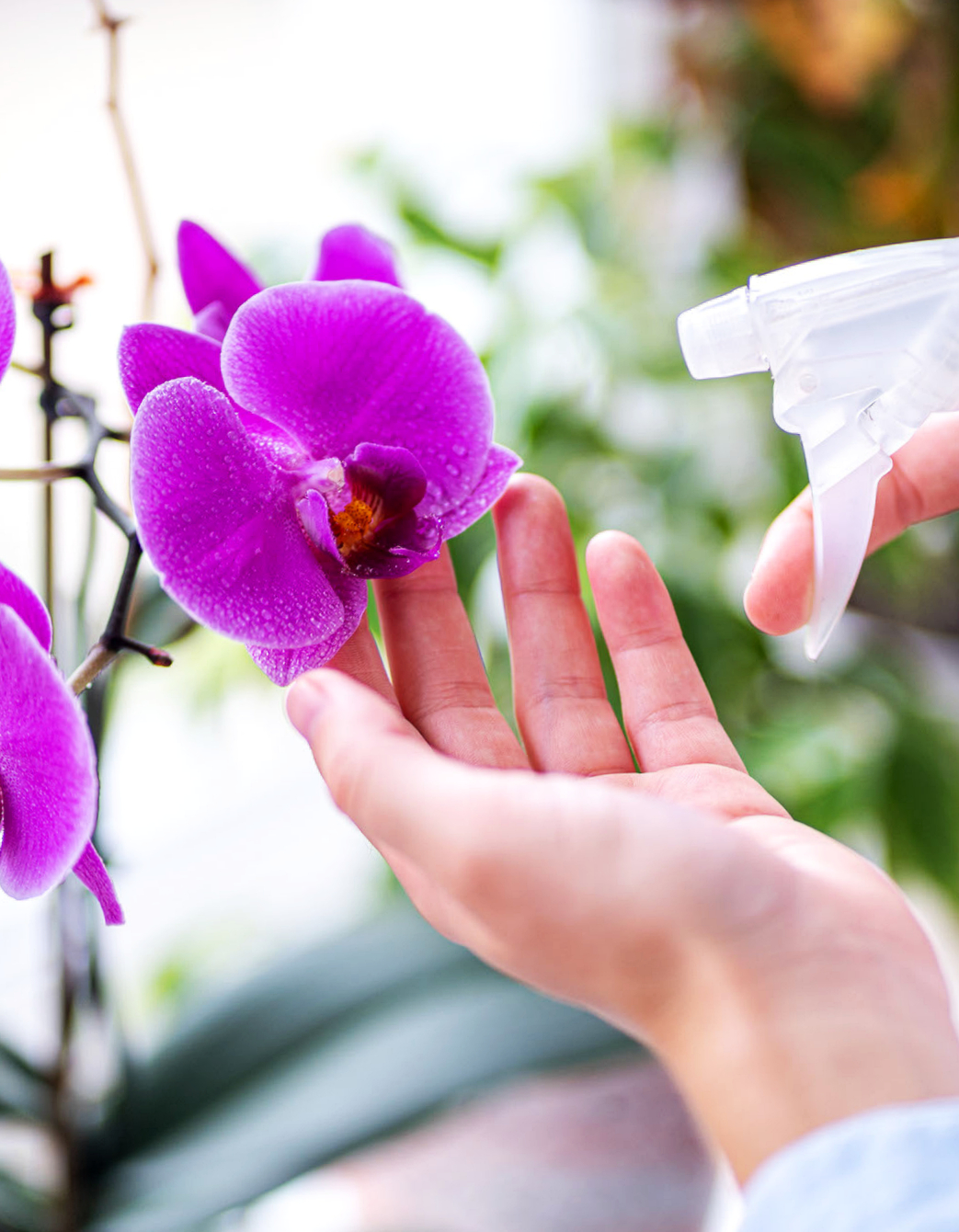How to Water Orchids
Orchids are delicate plants that require proper watering to thrive. It may seem daunting, but with some basic knowledge, you can succeed in keeping your orchids properly hydrated at home.
As a general rule, orchids need to dry out somewhat between watering. You should water your orchid plants when the potting medium starts to feel lightly damp to the touch. This typically happens every week or so for most orchids in a pot size of 5 inches or larger. Keep in mind that smaller pots dry out faster and may require watering two to three times a week. However, every grower's environment is different, so you need to become familiar with your plant's watering needs over time. If you're unsure, don't water and wait for another day or two.
It's best to water your orchids in the morning so that the leaves have time to dry and avoid bacterial growth overnight. Use water low in alkalinity, such as rainwater, distilled water, or reverse osmosis water if possible. If you have a dehumidifier at home, the water that collects in the tray is great for watering orchids.
If you have an epiphytic plant grown on a slab, you should water it daily or maintain high humidity for successful growth.
When your orchids are about to bloom and throughout the blooming period, make sure to water them more often. Allowing orchids to dry out too much during this time can cause bud blast and early flower drop.
We recommend through-watering orchids until there is free drainage coming out of the bottom of the pot. This ensures that the entire root system and potting media are properly hydrated. Using ice cubes is not recommended as it may result in under-watering your orchid plants, which can lead to a stressed root system and under-developed plant over time.
If you've repotted your orchid during the active growing season, don't water the media for at least 3 to 4 days. This allows cuts and breaks in the roots to callous over and avoid rotting upon being watered again.
Standing water promotes bacterial growth and leads to rot over time. Avoid leaving your orchid pot submerged in water for long periods, as the roots will begin to rot. The only exception to this rule is if you're growing Phragmipedium orchids, many of which benefit from semi-hydroponic style pots. Additionally, avoid watering late in the day and watering directly into the crown of the plant, as both habits can lead to sitting water culturing bacterial and fungal pathogens on your orchid's leaves.
Wrinkled or pleated leaves on orchids are caused by a lack of moisture reaching the vegetative part of the plant. This can be due to under-watering or over-watering. If you can't figure out what you've done, tip the plant out of the pot and examine the roots. Healthy roots are white or tan, firm, and spread throughout the mix. In contrast, rotted roots appear brown and mushy. If the roots have rotted, trim off the dead roots, repot into a new mix, and decrease the frequency of watering. Your orchid may continue to lose leaves as it pulls moisture and nutrients from them while growing new roots.
In conclusion, proper watering is a crucial aspect of orchid culture. Follow these basic guidelines to keep your orchids properly hydrated and thriving. Always remember, orchids should never stand in water!






Comments
Leave your comment